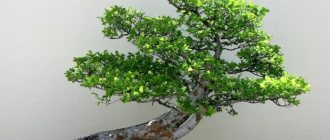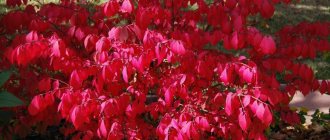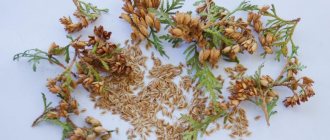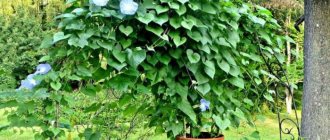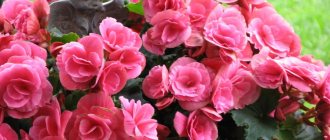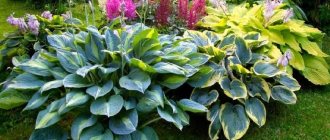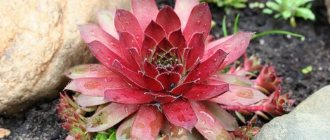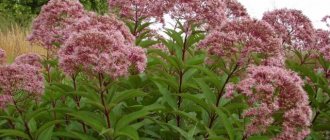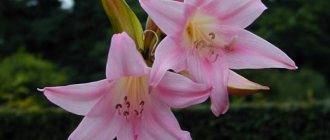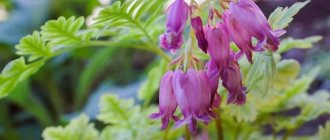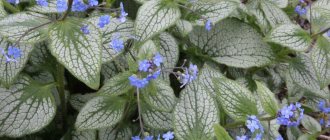Some sources say that his homeland is Europe, while others say Australia. However, there are between 14 and 30 varieties in the world. Most of them can be found in China, Japan, North America and European countries.
Chestnut tree
Chestnut is a member of the Legume family. Reaches a height of 30 meters. The characteristics clearly indicate greatness and superiority over other types of trees growing in its territorial area.
Description of chestnut tree:
- trunk more than 2 meters wide.
- The leaves are wide, oblong-lanceolate with pointed ends. The length is about 15-25 cm.
- The flowers are large, white, and upward-sloping flowers look like luxurious earrings created by nature. Each flower is divided into 6 petals and 6-15 stamens.
- The nut is interesting in appearance and content. Covered on the outside with a thick, prickly crust, it looks like a hedgehog. The fruit itself consists of cellulose, starch and sugar. It is brown in color and divided into two or three parts inside the peel.
Chestnut is a long-living plant. The age of the tree can exceed 1 thousand years.
And in the vicinity of the Sicilian volcano Etna, the legendary Chestnut of hundreds of horses was found. It blooms unusually beautifully and is the hero of an ancient Italian legend. It is worth noting that the specimen survived about 4 thousand years.
This video shows how chestnut blossoms in stages:
Distribution history
The spread and acclimatization of the chestnut tree goes back a long way. From the very beginning it was known during the era of the great Greek Empire.
Chestnut was valued for its qualities:
- nutritious fruits;
- the use of tree trunks as material for the production of ships and furniture;
- use of nut-based medicines;
- aesthetic aspect when the tree blooms.
The Greeks developed breeds to achieve specific purposes: for making Spartan black bread, flour or soups.
In the eighth century, the chestnut again began to enjoy popularity among members of high society, becoming a main ingredient in the production of sweets.
Particularly dangerous diseases and pests
Like any other tree, chestnut is not protected from disease, and rusty leaves are the first and most common problem. Dried brown foliage makes the majestic giants pitiful and helpless. Such a sad picture can be observed in many cities in the middle of summer. Experts identify the following types of spots:
- Brown. Small rusty spots quickly progress and cover the entire leaf. Appears on both sides.
- Holey. Occurs when there is excess soil moisture or potassium deficiency. In this case, the leaves are often treated with Bordeaux mixture every 10 days. This procedure is carried out immediately after the flowering period.
- Red-brown. The reasons are related to sudden changes in temperature or very hot weather conditions.
- Black. When the buds have not yet woken up, the tree must be completely sprayed with a solution of copper sulfate.
Spraying procedures are carried out in the evening to avoid additional burns.
In addition to these diseases, the chestnut tree suffers from wood mites, powdery mildew (white coating in the form of cobwebs) and chestnut moth. To combat them, it is recommended to apply phosphate or potassium fertilizer. Leaves affected by dew should be removed and burned, and the crown should be treated with fungicides every 2 weeks. Of course, these dangerous pests/diseases need to be dealt with at an early stage, because they progress quickly. Such measures will help maintain the visual attractiveness of the perennial plant.
Where does chestnut grow?
The distribution area of the chestnut tree is wide:
- Spain;
- France;
- Part of Switzerland (Valais, Southern District);
- Italy, including Alpine valleys;
- Croatia;
- Balkan Peninsula;
- Asia Minor;
- Caucasus;
- Persia;
- South Africa.
Many species have spread as far as Japan and the United States of America. This is a typical forest tree, especially common on the Italian mountain slopes and also known in the Mediterranean Sea, with plantings reaching the Black Sea.
For fruitful growth you need:
- The soil . The chestnut tree does not live in isolation from other species. Loves siliceous soil or limestone. Chestnut blooms fruitfully in fresh soil, although it does not seek excess moisture. It is not planted in garden areas, as its size will become a serious problem for the development of other plants and species. The chestnut tree does not require special conditions for growth. Grows even in poor soil. The main thing is that it is a neutral layer of earth, with slight acidity, and does not contain clay.
- Temperate climate . Trees do not like constantly wet and compact soil, and also do not tolerate prolonged drought, especially in summer. In areas with high temperatures and dry climates, trees find their place in mountainous areas or among the hills, where the summer heat does not exceed dangerous levels.
- No low temperatures. Can withstand temperatures of -20 degrees in winter. But if this situation drags on for several weeks, the tree dies.
- High temperatures. It also tolerates heat normally if it does not exceed a short period. In this case, it is recommended to plant trees in a more ventilated area and with shade during the hottest time of the day. The chestnut tree is not afraid of drought, which does not last long and does not affect the period when the chestnut tree blooms.
Caring for unpretentious pavia
Red horse chestnut is a hardy plant. And taking care of it is quite simple, in fact it comes down to just a few procedures per year:
- watering during extreme drought (like all horse chestnuts with a shallow root system, pavia is sensitive to lack of moisture in the soil);
- loosening the soil, weeding or mulching (for pavia it is better to choose sawdust, peat or wood chips, crushed bark);
- annual removal of damaged and dry shoots (and for chestnuts formed on a trunk or with a strict crown shape - also formative pruning) in early spring;
- fertilizing: starting from the third year of cultivation, they are carried out in early spring, using organic fertilizers and half the share of nitrogen fertilizers (urea, ammonium nitrate in the amount of 15 g per 1 tree and a bucket of water) and in the fall, using full mineral fertilizers (15 g of a self-created mixture or nitroammophoska is enough).
Horse chestnut pavia, variety 'Rosea nana'. © hgeers
When does chestnut bloom?
The peculiarity of flowering is that it begins quite late compared to other fruit trees.
The swelling of the buds and the opening of flowers usually occurs in May.
This advantage avoids the risk of frost during bud opening and, as a result, loss of nuts.
And also a lot depends on the breed. Certain categories of chestnut fruit trees adapt to the required temperatures and begin to bloom when the climate becomes suitable for them.
Flowering lasts about 2-3 weeks, after which small green nuts are formed.
How does chestnut bloom?
An impressive moment in the life of this tree is the moment of flowering. With the arrival of spring, the tree comes to life after winter sleep. It transforms in such a way that it is impossible to take your eyes off its beauty and charm.
Description of chestnut flower:
- Flowers come in different shades depending on the specific type of wood.
- Often these are large white blooms with red or pink specks.
- The shape of the flowers resembles medieval candles.
- The structure is unusual and complex.
- Along the crown there are many individual flowers that form a pyramid.
- They reach almost 2 cm in diameter, surpassing any tree in size and beauty of flowering.
Photo gallery: flowering chestnut tree
Why doesn't it bloom?
Chestnut does not require constant care and is easy to grow. What factors influence the development of a chestnut tree and why does it not bloom?
Here are the main reasons:
- Age . Some species of this tree do not begin to flower until they reach ten years of age. There are also breeds that need longer time.
- Lack of space . The chestnut tree is a large specimen. It is important to have the space necessary for growth. When there is not enough space, the tree stops developing and stops blooming. It is important to ensure that there are no other trees within a radius of at least six meters from the trunk. When the chestnuts are close, it will be cramped for one. In this case, a strong tree will take away moisture and soil, and the other will die from lack of opportunity to grow.
- Unsuitable air temperature . A tree with inedible nuts always blooms, since it does not need a certain temperature. It is enough that it is not too high or too low. The situation is different with edible breeds. Often, they require 13 – 18 degrees above zero to bloom. In cold climates, chestnuts do not bloom.
Without the slightest flaw
If we organized a beauty contest among trees, then the chestnut would, without a doubt, take one of the prizes. The refined and extraordinary beauty of the inflorescences, leaves and luxurious crown look harmonious with the formidable appearance of this titanium. This paradoxical combination can be characterized by the following series of magnificent features:
- inflorescences are presented in the form of pyramidal candles (each up to 15 cm in length);
- cream-colored flowers with pinkish spots and oblong tendrils in the center;
- the leaves are collected in luxurious fans (5-7 in one bunch), which are arranged spirally on the shoots;
- oblong leaves (10-20 cm) of dark green color have a jagged edge and are shaped like the tip of a medieval spear;
- the dense crown of an ovoid/round shape grows up to 20 meters in width;
- Brown fruits with a glossy coating are hidden by a prickly shell, which breaks into four parts when ripe or hit hard;
- The lower part of the trunk becomes bare over time, and the tree takes on a chic appearance.
These perennial plants love the sun so much that they grow up to 15-30 meters. Of course, such a result can only be expected after several decades. In this regard, many are interested in how long a chestnut tree grows. It is worth knowing that in 12 months the trunk of this giant increases by 30-50 cm. Therefore, by the fourth year of its existence, its height will be about 1 meter. At the same time, the tree will be able to meet the 10th spring of its “life” with charming blossoms and luxurious fruits.
A powerful root system and dense bark allow the chestnut to withstand severe frosts. At the same time, trees adapt to different types of soil. Still, it is better for them to choose non-saline, well-drained and moist soils.
Types of flowering chestnuts
Over the centuries, growing trends have changed and different types of wood are found. They vary in distribution area and in fruit quality, tree structure, longevity and use.
Chestnut
Popular view. Blooms in areas of constant rain and high humidity. The fruits are suitable for consumption with a pleasant sweetish taste. The main ingredient in the production of sweets and jams.
Chestnut
Fruits of chestnut
Horse chestnut
The horse chestnut, or common chestnut , is a centuries-old tree with roots in Western Asia and Eastern Europe. Popular all over the world. The horse species is used as an ornamental plant for parks and alleys. Nuts are not edible. The name suggests that horse chestnut was used mainly as food for horses.
Description of the species:
- Horse chestnut is similar to sweet chestnut in terms of tree structure, but their fruits are very different from each other.
- The horse variety is larger in size and the skin is much coarser than the sweet variety.
- The needles are wide and less frequent.
- Horse chestnut fruits contain a high percentage of saponins and glucosides, which are unpleasant to the taste.
horse chestnut
Horse chestnut fruit
Australian chestnut
This species does not take its name from its country of origin. The Australian species was brought to the mainland by emigrants. In particular, from Great Britain, Ireland and China, who arrived in Australia for the purpose of gold mining between 1850 and 1870.
The Australian chestnut differs from other breeds in its ideal shape. It amazes with its bright emerald hue and smooth leaves. Gets along great even at home. In favorable conditions, the height reaches 10 meters. The fruits have a sweetish, rich taste and are suitable for making jam.
Australian chestnut
Australian chestnut fruits
Japanese chestnut
Distributed on the mountain slopes of Japan. The tree blooms very early - already in the second year after planting. Selects clay soil and humid climate. The height of an adult specimen is about 15-20 meters. The branches fall to the ground and bear large edible fruits.
Japanese chestnut
Japanese chestnut fruit
Chinese chestnut
The species blooms mainly in China, Vietnam and Korea, creating entire chestnut forests. Chinese chestnut chooses soils rich in calcium. The flowering period begins quite late - in the fifth year after planting.
Flowers of the Chinese species are unlike any inflorescence of other species . These are the thinnest long flowers, shaped like the top of a reed. The fruits of Chinese chestnut are used in the food industry and construction activities.
Chinese chestnut
Chinese chestnut fruit
Red chestnut
A tree of the horse chestnut family, a rare species. It is fragile and grows in parks. Due to its bright pink flowers and pleasant scent, red chestnut is often used for decoration purposes. It begins to bloom in early spring and ends flowering at the end of the season.
Red chestnut
Guinea chestnut
Originates in the tropical forests of Central America. The biggest maintenance challenge is the large amount of water the tree requires to grow. The Guinea chestnut is a bright representative of the Baobab family. The shape resembles a bottle, since in the lower part the chestnut tends to accumulate moisture to saturate the trunk of the fruit.
In Russia, Guinea chestnut is used as part of home interiors . It adapts well to room temperature and does not exceed small sizes if the space is limited by a vase. Flowering Guinea chestnut at home is almost impossible.
Smooth chestnut
Another representative of the horse chestnut family, therefore the fruits of the subspecies are inedible. Smooth chestnut blooms mainly in areas of North America, Central Asia and Europe. Frost-resistant and light-loving breed.
forest chestnut
The tree originated in Turkey, after which it spread throughout Europe. Forest chestnut is popular in the United States, where it is part of the crops that decorate national parks and gardens with beautiful flowers. The tree cannot bear edible fruit. Therefore, it is used only for decorative purposes.
Features of cultivation
The tree grows quickly if it is provided with favorable conditions. How to plant chestnut trees correctly? To begin with, the planting area is cleared of weeds. This should be a square of 50 by 50 cm. The plant does not like acidic, saline or waterlogged soils, so choose a planting site with sandy or chernozem soils, where groundwater does not lie closer than 1 m to the surface of the earth.
Sprouted nuts are planted in May, when the threat of return frosts has passed. The fruit is buried 5-7 cm, sprinkled with soil and moistened, followed by loosening. Be sure to put a mark next to it. In dry weather on sandy soils, regular watering of young seedlings is necessary throughout the dry season.
Over the summer, the seedling grows to 50-60 cm. Above in the photo is a horse chestnut in the first season after planting. The tree is unpretentious in cultivation, but in the first few years during severe winters it needs to be covered with non-woven material. The tree trunk circle is sprinkled with peat or fallen leaves, and the crown is wrapped in spunbond material, but only if there is a possibility of severe frosts; this does not need to be done in advance.
If the area where the tree is planted is really large, and the branched root system will not inhibit the growth of other plants, it is shortened. This is done on young seedlings by partially cutting off the main tap root. This gives an incentive to develop lateral shoots, which increases the tree’s resistance to strong winds and improves its nutrition.
This procedure also makes the crown thicker and more decorative. In hot regions where there is a high probability of prolonged heat with air temperatures of 30 ° C, seedlings are planted in partial shade to avoid burning of the leaves. Burnt leaves turn brown and dry out, significantly reducing the decorative value of the plant.
Horse chestnut is good because it is almost not damaged by insects and diseases. In a few years it grows into a full-fledged tree, the crown of which provides welcome shade in the summer heat. When grown far from the city, the fruits, inflorescences and bark can be used for medicinal purposes.
How to distinguish an edible chestnut from an inedible one?
It is important to be able to distinguish edible from inedible fruits. One of the differences is the appearance of the fruit.
Inedible chestnut:
| |
Edible chestnut:
|
Using horse chestnut in landscape design
In urban landscaping, chestnut is used much more often than in gardening. The trees form smooth, shady alleys in parks or are planted as single specimens in combination with other deciduous or coniferous trees. You can clearly see in the photo how the chestnut tree blooms and how decorative it is during this period.
The plant is a long-lived plant; in natural conditions it lives up to 300 years, which is why it is so often used in landscaping. Today there are many varieties of the common horse chestnut. Specimens with a drooping crown look especially decorative. There are subspecies in the form of a bush, reaching only 2 meters in height, there are dwarf trees and standard forms. All of them fit perfectly into different types of landscapes, from country-style gardens to elegant English and French ones.
Uses of chestnut
Chestnut has found wide application in human life due to its rare properties.
Here are the main areas of application:
- Construction and furniture making . In industry, wild chestnut is a source of wood. Compact and stable, used in the manufacture of railway sleepers and furniture.
- Food industry . Cultivated chestnut is used in the food industry. Serves as an ingredient in the preparation of sweets, flour, buns, etc. Chestnut fruits are a low-calorie product, so they are in great demand on store shelves. Used in any form: dried, fried and boiled.
- Coal industry . Chestnut is also good for making coal. A high-quality source of heat and produces ash, an excellent assistant in fertilizing garden crops.
Interesting facts about chestnut
- Having a centuries-long history of distribution behind it, the chestnut is the hero of legends. The most famous of them was in relation to the Hundred Horse Chestnut, which grows in Sicily in the vicinity of Mount Etna. The specimen is considered the oldest tree in Europe. The age has reached almost 4 thousand years.
- The name comes from a legend that says that Giovanna of Aragon and her army, 100 horses and riders were once hiding from a thunderstorm under the massive branches of a tree.
- The Hundred Horse Chestnut is listed in the Guinness Book of World Records and is the main character in many songs and stories of famous cultural figures of the seventh and eighth centuries.
- Another interesting fact is the use of tree leaves as tobacco. Initially, they were dried and underwent the necessary processing.
Chestnut is a great gift from nature to humanity. Therefore, if you pass by it, be sure to stop and watch it bloom.
